Although Spotted Lanternflies don’t bite or sting human beings, their destructiveness makes them dangerous.
They attack plants and trees such as fruits and hardwoods, causing extensive damage in the process. Because they move in large groups, these insects are unsightly and affect the quality of life wherever they go.
Spotted Lanternflies harm host plants by sucking their sap.

This results in oozing wounds of sap and mold, causing withering, stunted growth, delayed maturity, and even plant death.
Adult insects excrete honeydew on the affected plant, a substance that attracts other pests and promotes the development of sticky mold.
Why Are Spotted Lanternflies an Invasive Species?
Spotted Lanternflies are categorized as an invasive species in the United States and some Asian countries like Japan and South Korea.
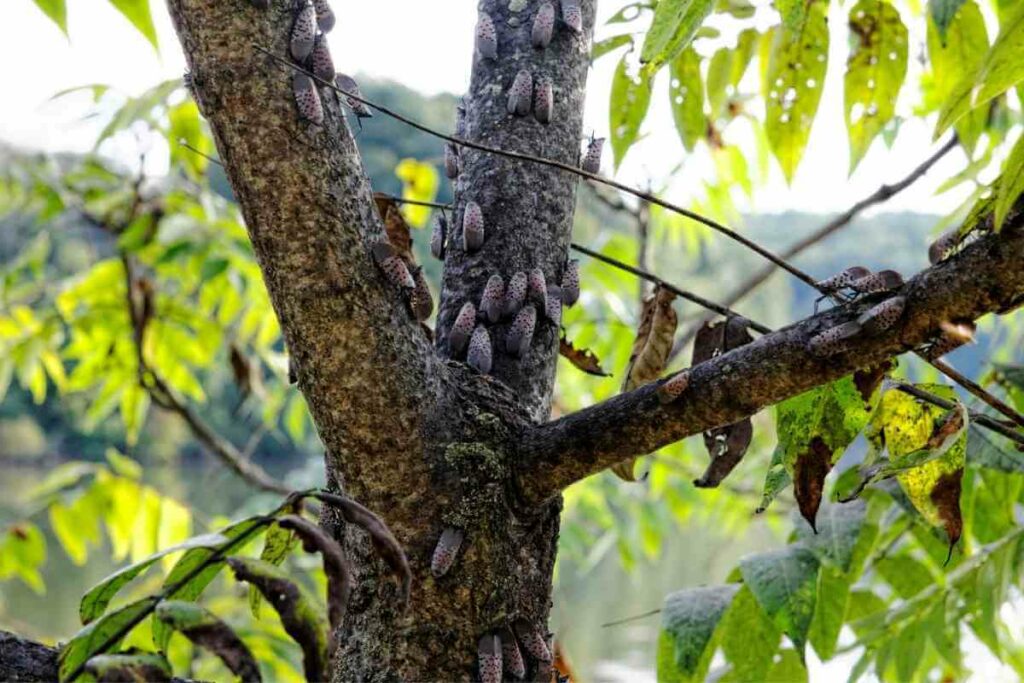
A species is considered invasive when unintentionally introduced to a new area. Such species usually cause harm to their new surroundings.
For instance, Spotted Lanternflies cause damage to economically significant trees such as oaks and black walnut.
Another reason why people don’t like invasive species is that they lack predators in their new environments.
As Such: Their population multiplies that it gets out of control. Because they’re inconspicuous when they move into new areas, their spread goes unnoticed until it gets out of hand.
How Are Spotted Lanternflies Spreading?
As mentioned above, Spotted Lanternflies are spreading at a rate that’s causing concern among arborists and foresters in the United States and Asia.
Adult Spotted Lanternflies can only cover a short distance despite having wings and flying ability.
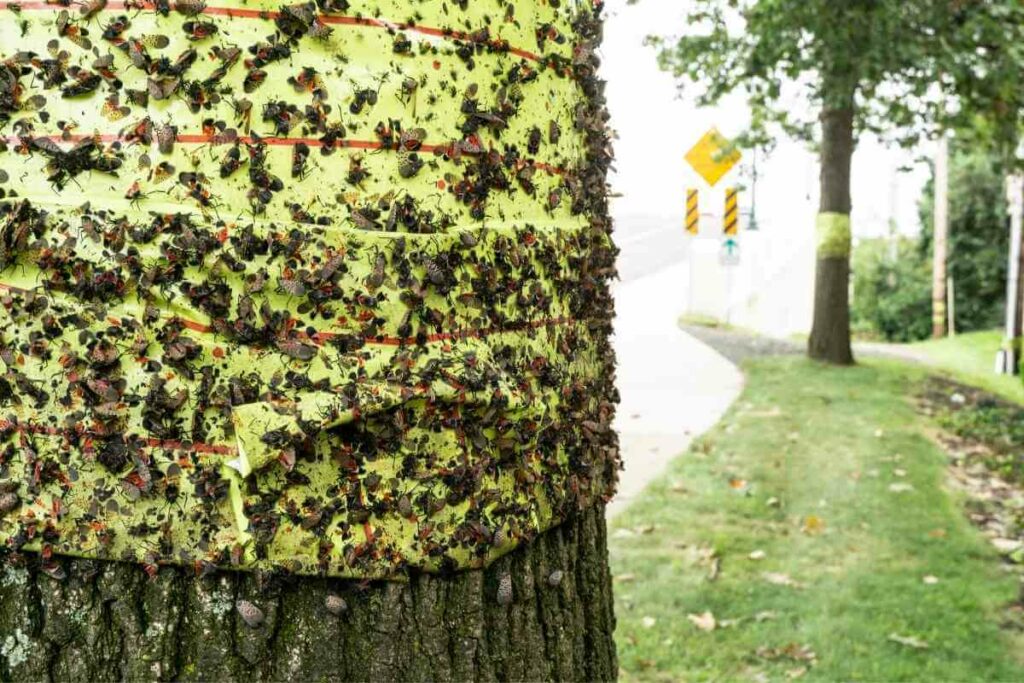
This explains why the most effective way of spreading this insect’s genesis is through their eggs.
Spotted Lanternflies lay between 30 and 50 eggs. These egg masses have a waxy substance that resembles mud, called an ootheca.
When it dries and cracks, it can camouflage easily with tree bark.
Other places where the insect lays eggs include fenceposts and abandoned pieces of furniture.
People usually transport the eggs unknowingly over long distances into new regions.
Additionally, the lack of native predators, like parasitic wasps, is also aiding the mass reproduction of Spotted Lanternflies.
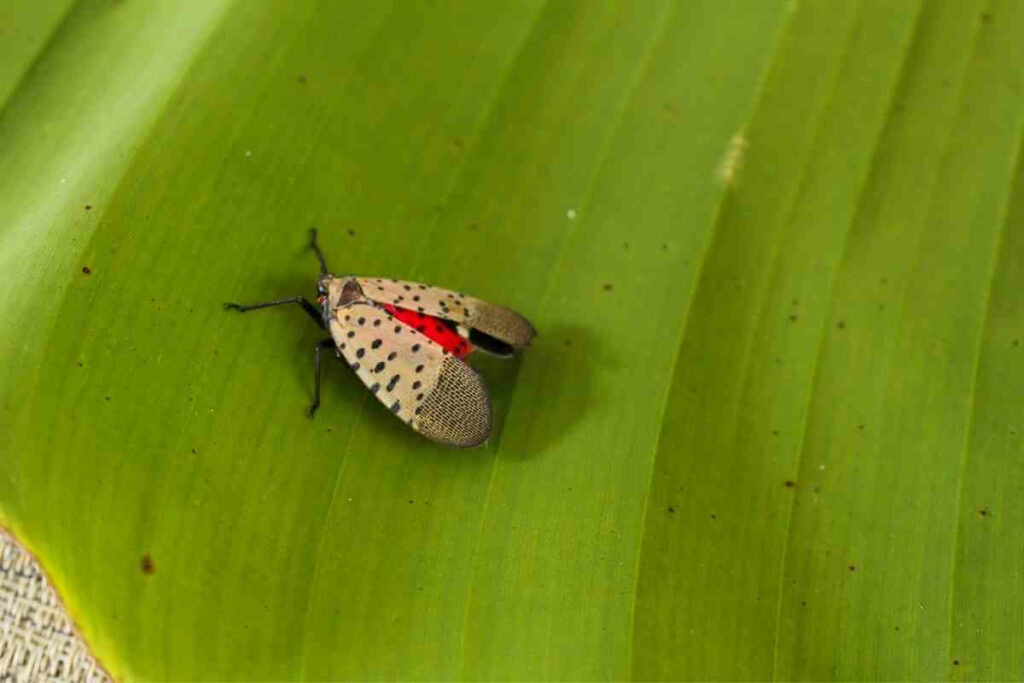
They don’t have to worry about predatory attacks in their new surroundings.
Even Better: The eggs can withstand cold winters. This means that insects thrive in various climatic conditions, making it harder to regulate their spread. However, they aren’t as resistant to hot conditions.
Are Spotted Lanternflies Harmful to Pets?
Some people claim that Spotted Lanternflies are harmful to pets, like cats and dogs.
Is this true?
Read on to discover the facts.
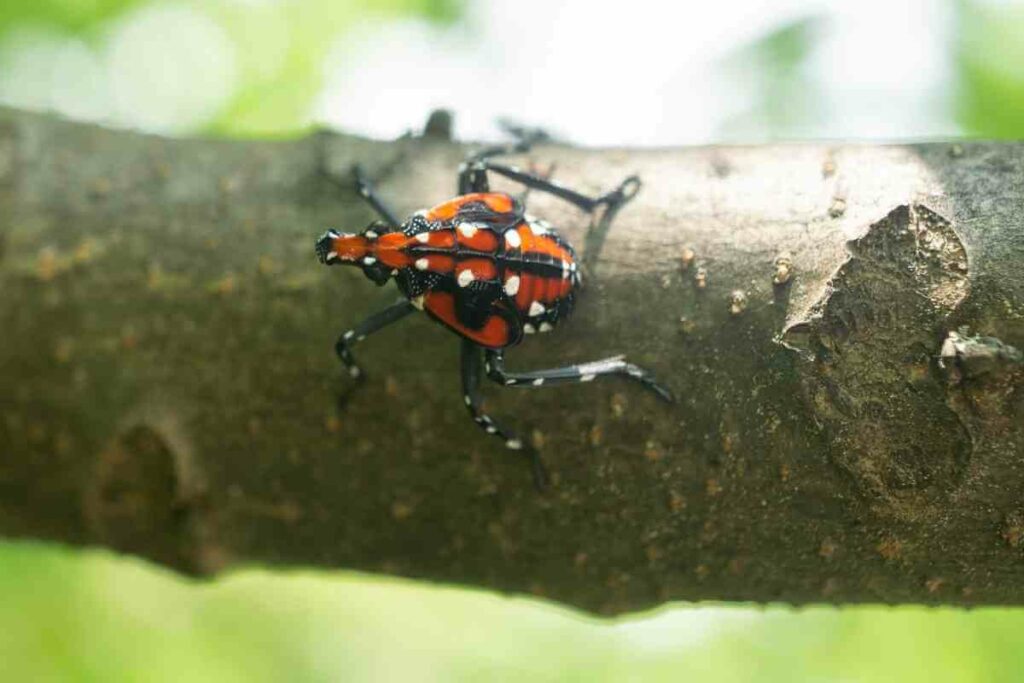
In reality, the newness of the Spotted Lanternfly to the United States means that it is still under research, and experts have little information on its effects on other living organisms.
Although dogs might fall sick and get blisters on their paws after eating some insects, it isn’t clear if lanternflies cause these.
There’s a widespread belief that pets find Spotted Lanternflies bitter because of the plants that make up their diet.
Birds don’t like eating these insects, and the flies’ bright-colored wings indicate that they have an unpleasant taste.
When cats and dogs ingest these insects, they start:
- drooling
- vomiting
- and experiencing a loss of appetite
However, it’s worth noting that other conditions might be the cause behind such symptoms.
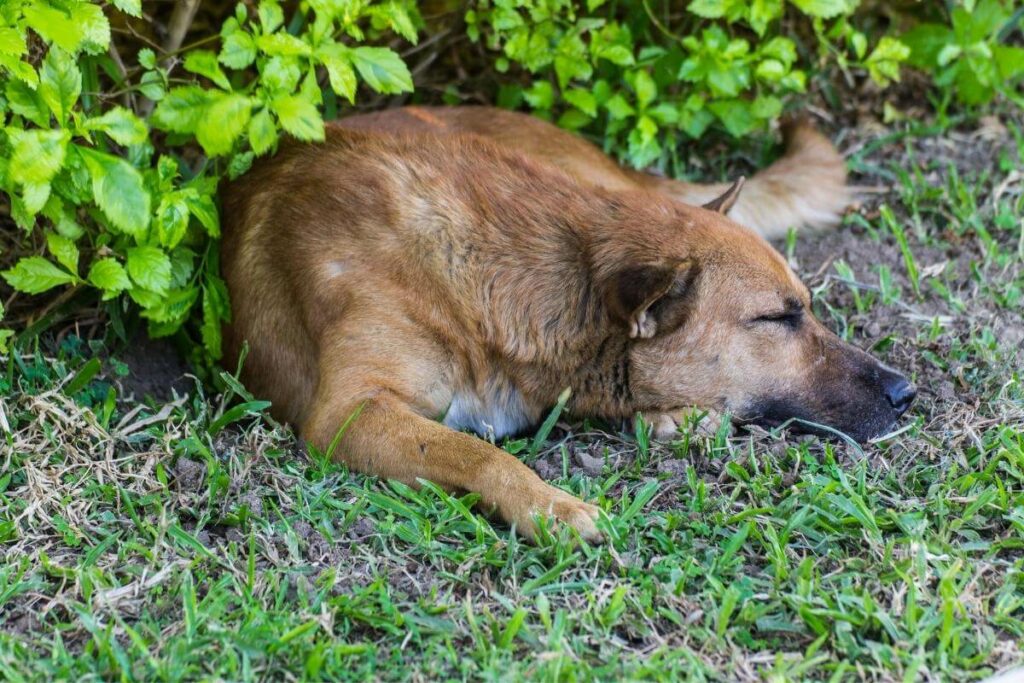
If your pet shows any of these symptoms, it would be best to consult a vet.
Currently, researchers are training dogs to sniff out the eggs of Spotted Lanternflies.
So Far: The progress is encouraging, with the dogs exhibiting a 95% success rate. Once the project is complete, these dogs will make it easier to identify eggs and destroy them before hatching.
Are Spotted Lanternflies Dangerous to Plants?
Plants are undoubtedly the biggest victim of Spotted Lanternflies.
These creatures cause damage to plants by sacking sap off their stems and secreting honeydew, a waste product that encourages fungal infections.
The preferred host plant for the Spotted Lanternfly is the Tree of Heaven, Ailanthus altissima.
The insect also invades ornamental and fruit-bearing trees, such as:
- oak
- apple
- grapes
- berries, etc.
Here, they suck the sap and hurt the plant’s health. Over time, the infected plant starts withering and can die if the infestation is extensive.
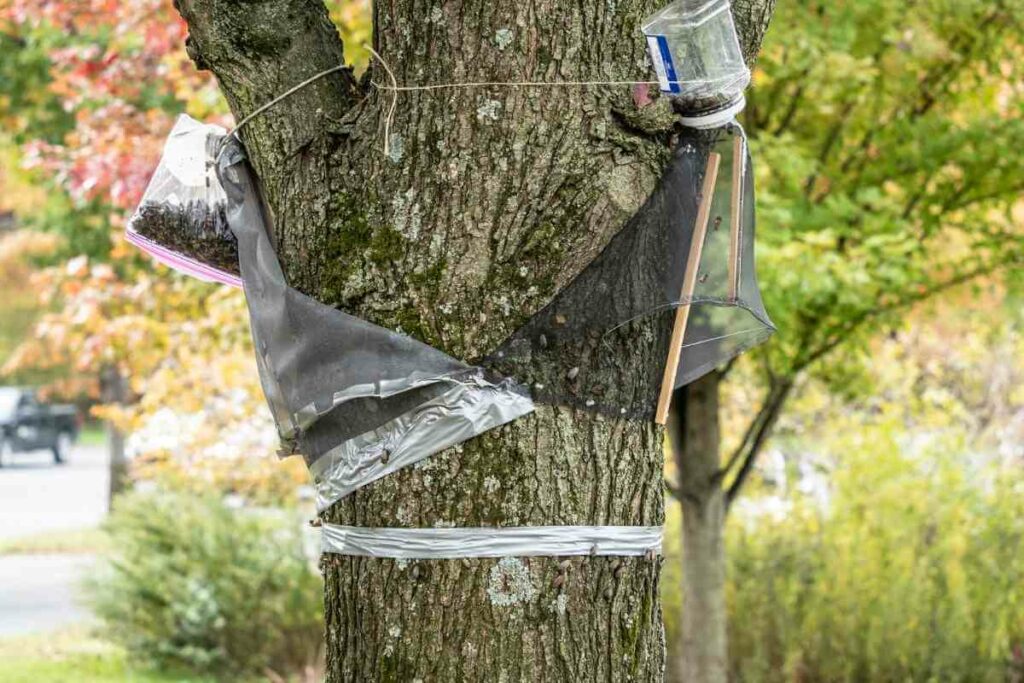
Since the sap has too much sugar that goes undigested, Spotted Lanternflies usually produce honeydew.
This is a sugary liquid, similar to the one secreted by aphids and some scale insects.
It attracts stinging insects such as bees and wasps, making it challenging to access the tree.
Besides attracting insects, honeydew encourages the growth of sooty mold.
The fungus that causes this growth forms a thick coating on leaves, hindering the plant’s ability to photosynthesize effectively.
As such, the plant starts withering because it can’t produce the energy needed to support growth and development.
How Do You Eliminate Spotted Lanternflies?

If you spot Spotted Lanternflies on your property, use the following methods to eliminate them.
- Destroy egg masses by burning or smashing them.
- Spray the infected trees with herbicides and insecticides to kill the insects. After the tree dies, uproot it entirely.
- If the infestation isn’t extensive, consider killing the insects one by one.
- Use sticky bands and duct tape to trap adult insects as they climb up trees.
- Consult a pest control expert who specializes in Spotted Lanternfly treatment.
Wrapping Up
While you can’t explicitly say that Spotted Lanternflies are dangerous to humans, you will feel the effects of their harmful behavior.
For instance, if they invade your home, they can cause extensive damage to your trees.
You will spend money eliminating them and lose the potential profit from selling the damaged plants.
The same applies to your pets. When your cats and dogs ingest these insects, they might start vomiting, lose appetite, and so on, forcing you to hire a vet.
Lastly, Spotted Lanternflies aren’t exactly eye-catching. Having infested trees in your yard creates an unsightly mess.
These invasive insects can undo all the time and effort you put into creating a welcoming and visually stunning outdoor space.
